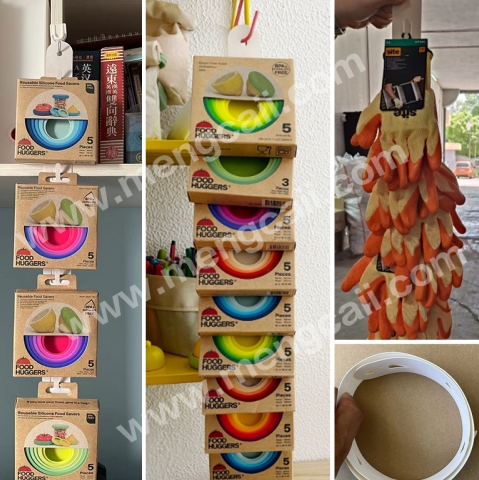Hangers are essential tools in the organizational arsenals of households and retail environments alike. These seemingly simple devices are designed with specific characteristics that cater to a variety of needs, ranging from the everyday act of storing personal clothing to the precise requirements of product display in retail settings.
A hallmark characteristic of hangers is their shape, which is typically a triangular frame with a hook at the top. This design is universally recognized and is crafted to mirror the shape of human shoulders, allowing garments to hang in a way that minimizes wrinkles and maintains their form. The curved shoulder design on many hangers also helps to preserve the shape of the clothing, preventing stretching or distortion at the shoulder line.
Material is another defining feature of hangers. They are commonly made from plastic, wood, or metal, each offering its own set of benefits and drawbacks. Plastic hangers are lightweight and inexpensive, making them accessible for wide use, whereas wooden hangers provide a more durable and aesthetically pleasing option, often used for heavier items like coats or suits. Metal hangers, typically made from wire, are slim and space-efficient, though they may not offer the same level of support as wooden or plastic alternatives.
The adaptability of hangers is also a key characteristic. Many come with adjustable clips for pants and skirts, ensuring a secure hold for a variety of garment types. Others are designed with notches or velvet-like coatings to prevent garments with straps from slipping off. The versatile nature of hangers makes them suitable for a broad range of clothing items, from delicate lingerie to bulky outerwear.

In addition to their traditional form, hangers can be specialized for particular functions. For example, there are hangers with broader arms for coats to maintain their shape, slim-line hangers that save space, and padded hangers designed for delicate items to avoid damage to the fabric.
However, innovation in this space has led to the development of paper hanging strips. These strips are a modern answer to the question of sustainability in the world of retail display. Paper hanging strips are made from renewable resources and are biodegradable, offering an eco-friendly alternative to traditional hangers. They are specifically designed to hold lightweight items such as snacks, accessories, or small clothing items, and can be printed with branding or product information, serving a dual purpose of display and advertisement.
The functionality of paper hanging strips extends beyond their environmental benefits. Their lightweight nature and ease of customization make them particularly attractive for retail settings where a large volume of products needs to be displayed in an organized and visually appealing manner. Moreover, these strips can be designed to collapse or fold, making them an excellent choice for products that are sold in a folded state but need to be displayed in an open position for better customer engagement.
Furthermore, the design of paper hanging strips often includes features to enhance product visibility and information accessibility. They can be crafted with various colors, printed details, and even unique shapes to attract the eye of the consumer and convey brand identity.
For those in the retail industry looking to implement an environmentally conscious approach to their product displays, paper hanging strips present a viable and sustainable option. Their design reflects a growing desire in the industry to reduce the ecological footprint while maintaining functionality and aesthetic appeal.
The attributes of hangers, from their shape and material to their versatility and adaptability, play a crucial role in their functionality. Whether it is the traditional wood, plastic, or metal hangers, or the innovative paper hanging strips, each type serves a specific purpose, reflecting the needs and values of the users. As the world moves towards more sustainable practices, the characteristics of hangers are likely to evolve, with materials and designs that reflect an eco-friendlier approach to garment care and retail display.